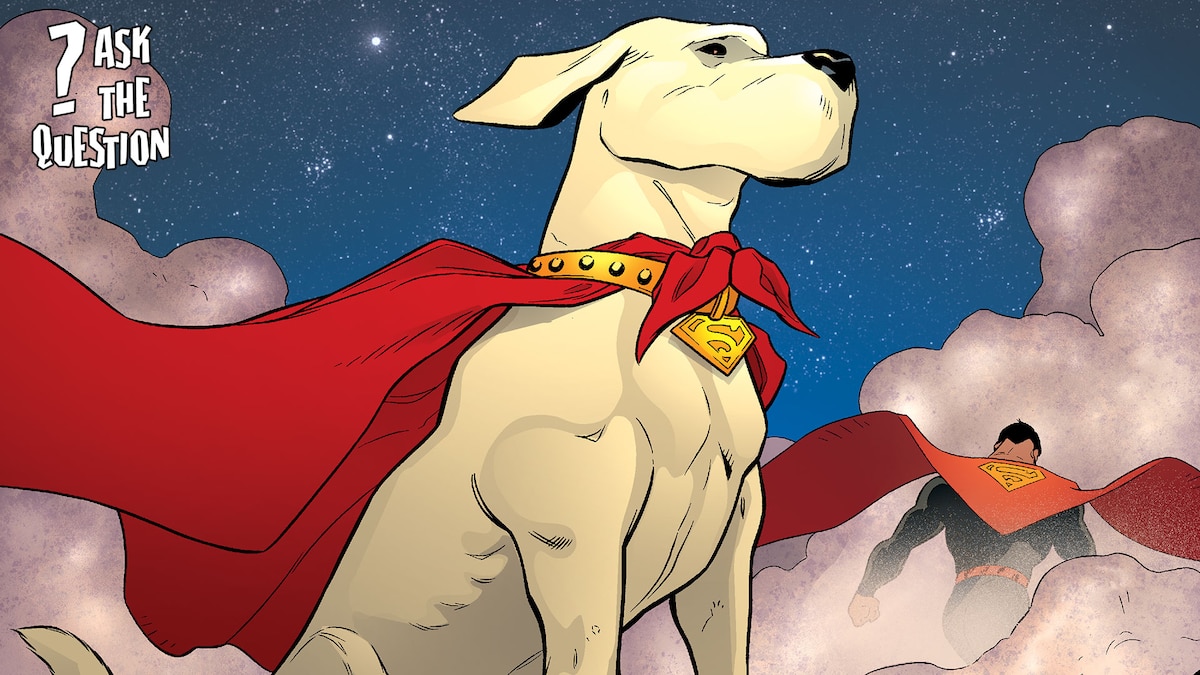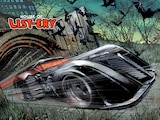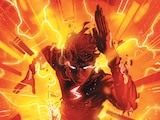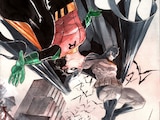Welcome back, friends. It’s another month and another mystery. I’m Alex Jaffe, better known to our illustrious DC Community as “HubCityQuestion,” and this is “ASK… THE QUESTION,” my regular column where all the secrets of the DC Universe you’re dying to know are revealed, no matter how granular or obscure. It’s a simple process to get involved. All you need to do is step by my office in the DC community, and put in your request for the answers you crave. There, I or another member of our tight-knit cadre of truth-seekers may be available to address your case. Otherwise, you may see the answers you desire printed in this very column. Answers… like these.
Last Kennel of Krypton
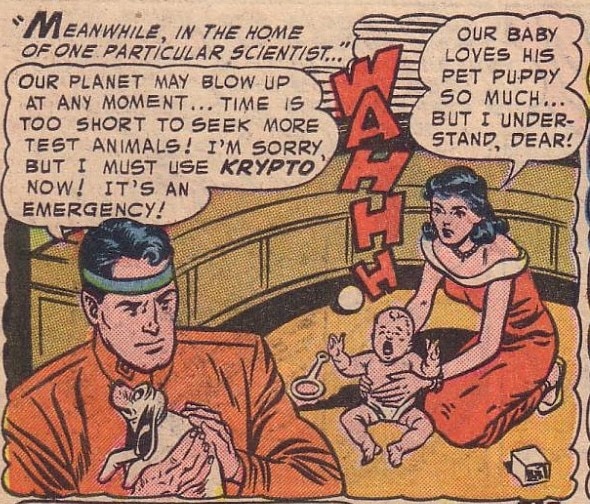
EternalKnight asks:
Has it ever been stated that Krypto is the last Canine of Krypton?
That was certainly the intention when Krypto was first introduced. In 1955’s Adventure Comics #210, a second rocket landed in Kansas years after Superboy with a dog on board and a record explaining his predicament. Right before Krypton’s destruction, the Kryptonian space program had begun experimentation with test rockets loaded with animal passengers. The first “manned” flight off-planet was baby Kal-El’s own, and in the moments before the end, Jor-El only had time to load one of Krypton’s test animals into another ship—that, of course, was Krypto. Years later, we would learn of a second test animal survivor, Beppo the Super-Monkey, who had stowed away on baby Kal’s own rocket and scrambled off before the Kents could find it. But apart from that, no other animals were known to survive Krypton’s destruction…
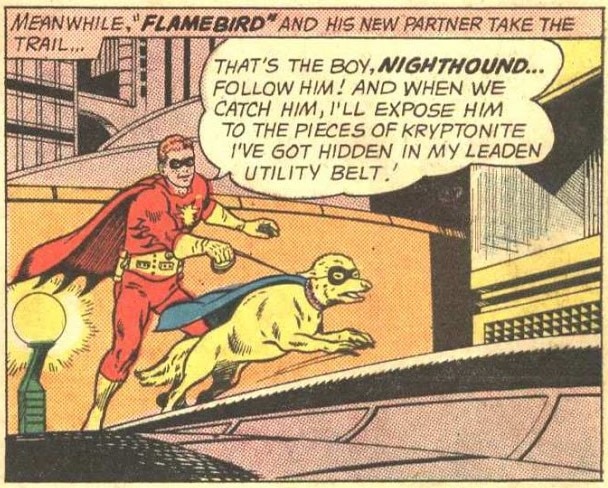
...until you remember the city of Kandor, that is. Miniaturized and bottled by Brainiac before the end of Krypton, life continued for the inhabitants of Krypton more or less as normal in miniature. It stands to reason that as Kryptonians continued to live their lives in Kandor, so too would their domesticated animals. 1963’s Superman’s Pal, Jimmy Olsen #69 introduced a kennel full of yellow, long-snouted telepathic dogs, each with the power to track whoever you needed to find just by thinking about them. Enter “Nighthound,” animal companion to Kandor’s own premiere dynamic duo of Nightwing and Flamebird—who, unknown to the native Kandorians, were actually none other than a miniaturized Clark Kent and Jimmy Olsen. Though Nighthound was originally used by their enemies, the dog recognized the goodness in Jimmy’s heart and accepted him as his new master. Once their enemies were defeated, Jimmy always intended to see Nighthound again on his next trip back to Kandor, but that was never quite to be.
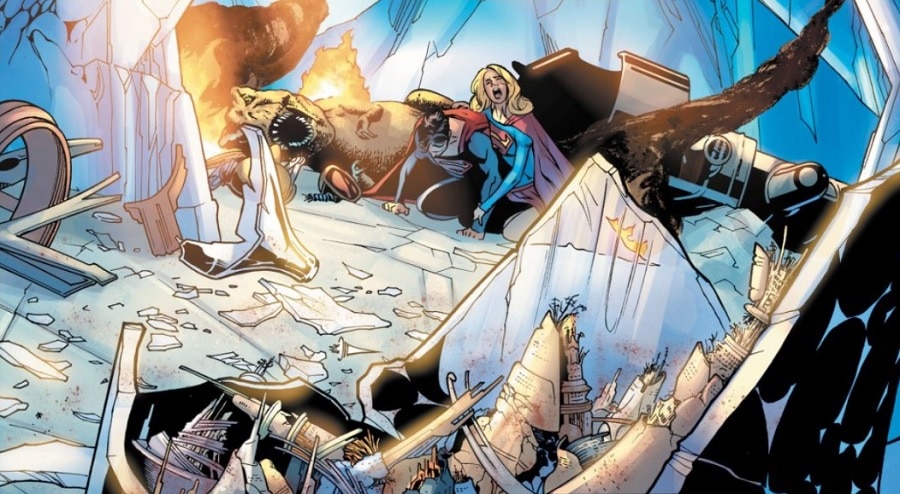
Oh, well. I’m sure he’s fine.
Peril of the Pit
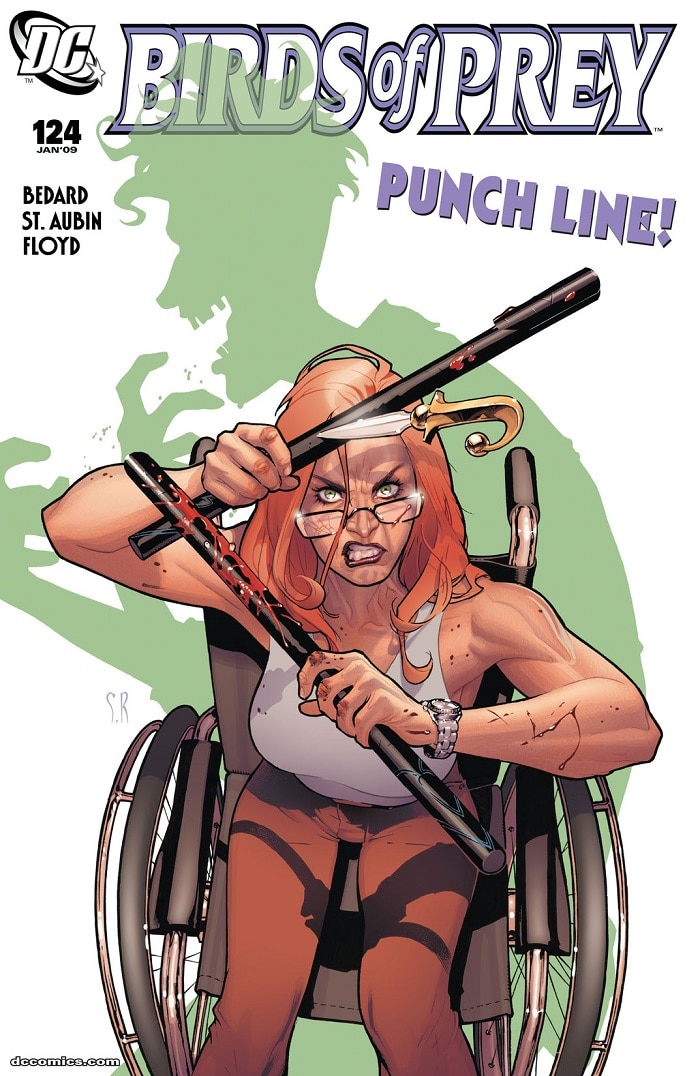
Nobody.Bladesmith asks:
Did they ever consider just throwing (Barbara Gordon) into a Lazarus Pit? It gives Black Canary back her cry and ability to have children (at least in Kingdom Come), yet we can’t magic Barbara up and let New Earth Babs have kids with Nightwing, yet Barbara gets to remain in a wheelchair or require implants to walk and be Batgirl…then again when it comes to the Bat-Family…
Well, to start, let’s get metafictional, as I believe was the implication of that last ellipsis. To finish your sentence for you, when it comes to the Bat-Family, supernatural and metahuman elements, while present in their world, are traditionally employed sparingly. One of the unspoken truths of the DC Universe, after all, is that practically any member of the Justice League could step in and deal with most of Batman’s criminals with ease. But part of the reason the DC Universe remains such an interesting place is that while so many of these concepts coexist, and can cross over at a moment’s notice, the worlds of Batman, Superman, and the rest also maintain their own boundaries of relative realism and genre. A Batman story doesn’t have to be anything but a Batman story just because Zatanna exists. It’s that narrative suspension of disbelief that allows multiple subgenres to exist within this world without a homogenization that ends up making every story default to a common denominator. And while Lazarus Pits are firmly ensconced within the Batman corner of the DC Universe, overreliance on them will inevitably dilute the stakes of any Batman story. To curb this impulse, DC’s creative teams have always tried to establish stakes whenever a Lazarus Pit comes into play.
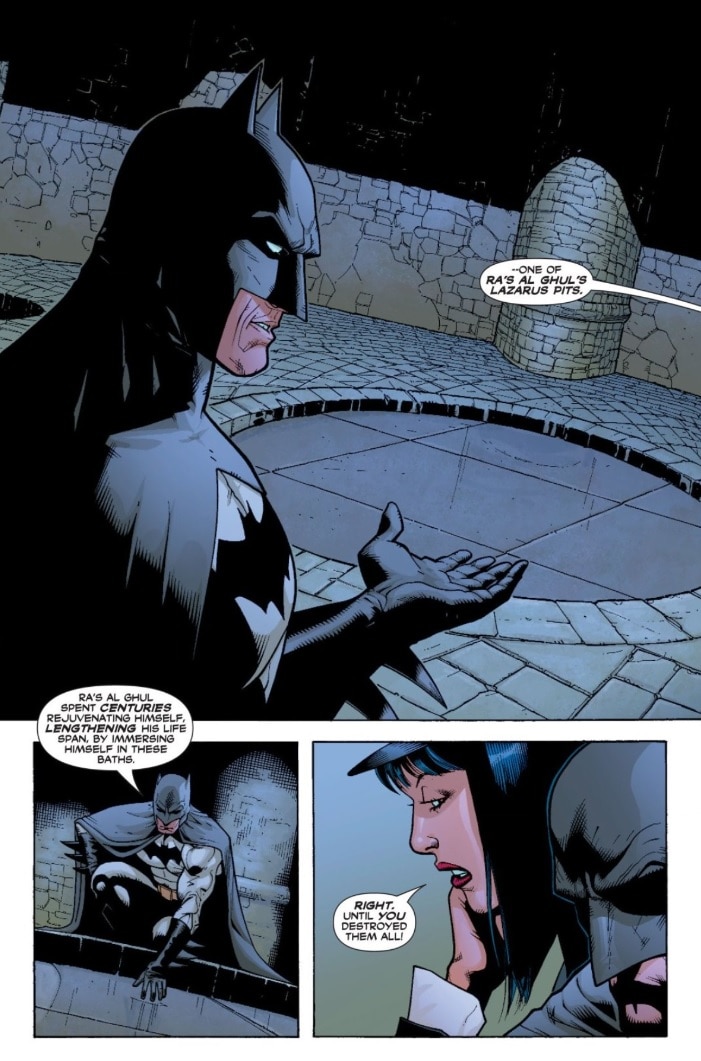
One of the recurring themes of any story involving the restorative Lazarus Pits of Ra’s al Ghul is that while they may revitalize your broken body, or even return you from death, they always exact their price. Through his own strained relationship with Talia, we see the toll that the Pits have taken on Ra’s each time he depends on them to extend his life. The pit’s effects on Jason Todd continue to affect his psyche in severe and dramatic ways even years after his rebirth. On TV’s Arrow, the bloodlust which accompanies any use of the Lazarus Pits is a very real consequence, corrupting the soul of the person who uses one.
The most common side effect of Lazarus Pit use, then, is the toll that it takes on a person’s mind and capacity for reason. So, let me answer your question with a question: would Barbara Gordon, who manages, organizes and dispatches the world’s heroes as Oracle, and who so successfully reinvented herself as a figure on whom the entire DC Universe depends on, risk the integrity of her mind just so she might be able to do a backflip again? I’d posit that’s too dear a price to pay.
In fact, there’s at least one occasion within Barbara’s history where she had the opportunity to use a Lazarus Pit for herself and deferred. It was in 2001’s Birds of Prey #34, where she and Ted Kord use a pit to revive Black Canary and as a side effect restore her cry. (Slowly working in story elements first seen in the future-set Kingdom Come series was kind of a hot trend at the time.) Even then, Oracle expresses her reservation on the effects that the Lazarus Pit could have on one’s mind, further explaining her own hesitation.
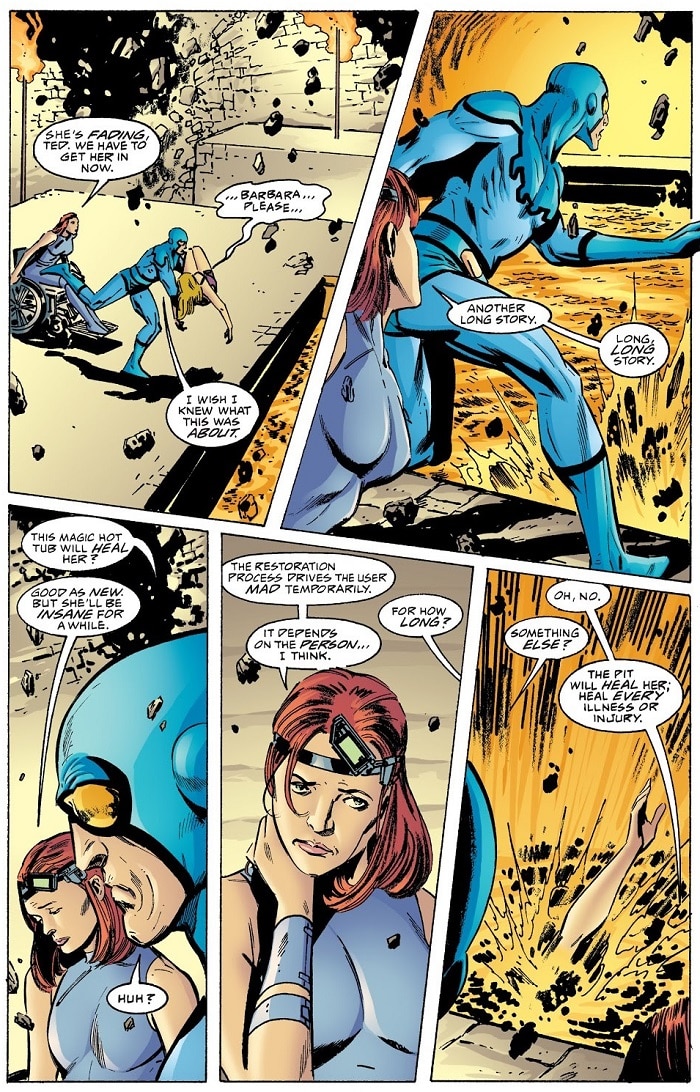
But I should also say that you’re not alone in this thought. In fact, according to a 2007 interview with Kingdom Come’s own Alex Ross, Paul Dini once put this very idea forward to Denny O’Neil, creator of the Lazarus Pits, who at the time was lead editor on all of the Batman titles. According to Ross:
“Paul Dini had this idea of putting Barbara Gordon in the Lazarus Pit to revive her...I thought it was a great idea, and we pitched then-Batman editor Denny O'Neil with these drawings of that costume design. The idea of using the red instead of the traditional yellow was meant to invoke the idea that coming from the Lazarus Pit, she was in a way, more compromised as a character...And...that went nowhere. Denny shot it down, because, according to him, everybody loves Barbara Gordon as Oracle and as a handicapped character. The theory was that DC didn't have enough handicapped characters, so they weren't going to do anything with Barbara as she was. And the design went into the drawer."
(That design, by the way, would go on to become the basis for the costume of Kate Kane’s Batwoman. Betcha wondered why they’re both redheads, huh?)
If you ask me (and I suppose you have), the late, great Denny O’Neil was 100% right. For a publishing line and a universe which has always stood for the empowerment of its readers, there has never really been much out there to show that those of us with physical disabilities could, in our own capacities, be the greatest heroes among us all. As Oracle, Barbara Gordon demonstrates that losing the use of her legs makes her no less of a hero, and that message alone is too powerful to discard just because the DC Universe’s fantastic backdrop may provide an easy fix. Who Oracle is, and what she does, is far more important than how she works.
Girl Power
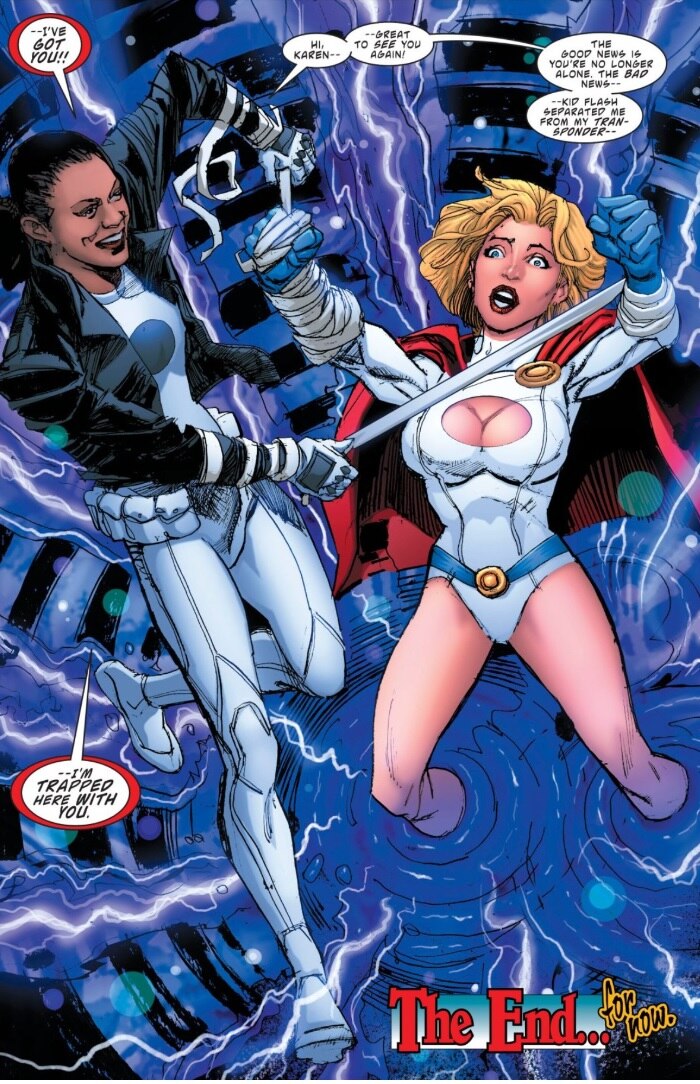
nickthehobo asks:
I have a question in regards to Christopher Priest’s Deathstroke run. Part way through the series, Tanya Spears is transported to another Earth (Earth-2, I believe). Did she ever make it back and if so, how?
The life of Tanya Spears, Power Girl of Prime-Earth, has been a tumultuous path. Once a protege to Karen Starr, the classic Power Girl of Earth-2, Tanya Spears took the name of Power Girl for herself when Karen returned to her own world as a member of the Teen Titans—and then later as a member of “Defiance,” Slade Wilson’s short-lived team of heroes formed during a stint at outward legitimacy. In 2018’s Deathstroke Annual #1, Tanya appeared to commit suicide, but had in fact become trapped in the Bleed between worlds along with the classic Power Girl. We haven’t seen Tanya in the current timeline since then, but Karen herself appears to have been unstuck between realities as of 2019’s Justice League #34, when she appears alongside a battalion of multiverse heroes against the Legion of Doom. I simply can’t imagine that Kamandi, who had gathered those extraplanar allies for this confrontation, would have just left Tanya there in the space between worlds, so there’s a reasonable place to assume that she’d have been dropped off back home.
What was do know is that by the time period of Future State: Shazam!, Tanya Spears is seen once more as a full-fledged member of the Justice League, under the new codename of “Powerhouse.” How that comes to be, or whether it’s merely one of many possible futures for the character, remains to be seen. Until then, keep Tanya alive in your hearts.
That’s all the time we have for this installment. Until we meet again, remember to stay curious and keep dropping your questions in the Community. We’ll never stop encouraging you to ASK… THE QUESTION.
Got something that's keeping you up nights? If you have a question about the DC Universe that you'd love to get answered, you can head on over to the DC Community and ask it here.
Alex Jaffe is the author of our monthly "Ask the Question" column and writes about TV, movies, comics and superhero history for DCComics.com. Follow him on Twitter at @AlexJaffe and find him in the DC Community as HubCityQuestion.
NOTE: The views and opinions expressed in this column are solely those of Alex Jaffe and do not necessarily reflect those of DC Entertainment or Warner Bros.
